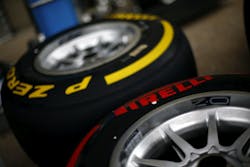The Austrian Grand Prix last appeared on the Formula One calendar in 2003, at the A1 Ring. Eleven years later, the track has been modified and now returns as the Red Bull Ring for round eight of this year’s world championship.
Pirelli will bring its soft and supersoft tires for the third consecutive race: the same nomination as Monte Carlo and Canada. But the Red Bull Ring is very different in character, with two main straights and mostly sharp corners. As a result, average speeds are generally low, meaning that the cars will have to rely on mechanical grip from the tires more than aerodynamic downforce. However, with no team having tested on the track, the weekend will be something of a step into the unknown for teams and drivers.
Paul Hembery, Pirelli motorsport director:
“It’s always exciting to go to a new circuit: everyone starts on a level playing field, with the teams and drivers who dial themselves into the new conditions soonest coming out on top. Based on the asphalt samples and track inspections from our engineers, we believe that the two softest compounds in our range will deliver the best compromise between performance and grip on a circuit where the teams are expected to run high downforce. One interesting question mark will be the weather, which is well known for being unpredictable over the circuit. With any new venue, the work done during free practice becomes particularly important, so the teams will be looking to take as much information as possible from the Friday and Saturday sessions in order to assess the behavior of the tires on the track with different fuel loads and set-ups. This will be the key to qualifying race strategy. Simulation data suggests that we will see a two-stop race, but this is subject to weather conditions and track evolution, which we will only understand properly after free practice.”
The circuit from a tire point of view:
The track alternates very slow corners with high-speed sections. Traction and lateral forces ensure a medium to high level of stress for the tires, especially in turns five and six.
The Red Bull Ring requires maximum downforce, in order to try and generate as much aerodynamic grip as possible on a circuit that has quite a low average speed. The effect of the downforce however is to put greater vertical forces on the cars. This is combined with sideways forces when the car goes round the corner, placing a number of different stresses on the tires.
The supersoft tire is a low working range compound, capable of achieving optimal performance even at low temperatures. The soft tire is a high working range compound, suitable for higher temperatures and more strenuous track conditions. Temperatures in Spielberg can vary but are generally in the region of 22 degrees centigrade, with a high risk of rain.
The asphalt is generally very smooth in Spielberg, having been extensively renewed recently. This means that the cars will slide more, especially at the start of the weekend, and this can cause graining if not kept under control.
The teams will decide on strategy when they get there and see some data from free practice, but starting on the supersoft followed by two stints on the soft would seem to be the most popular option.



